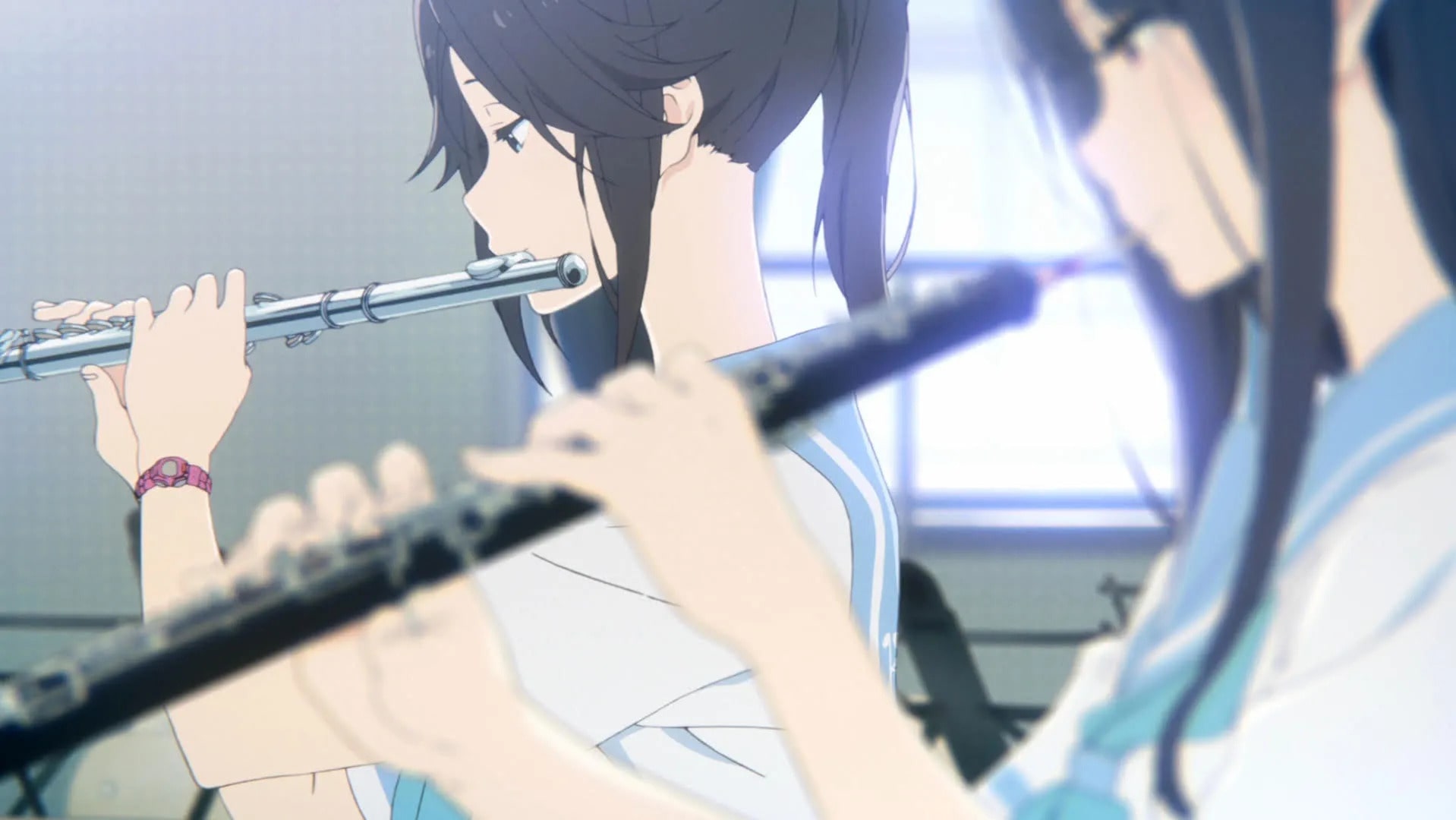The ‘Ghibliotheque Podcast’ is hosting a special screening of Kyoto Animation’s best-selling masterpiece, “Liz and the Blue Bird,” on Monday, August 28, in Brighton. The event, introduced by Michael Leader and Jake Cunningham, the presenters of the popular Ghibliotheque podcast, promises an exciting experience.
Held at the Dukes at Komedia cinema, known for its love of all things animated, the podcast has delved into the works of Ghibli and beyond, exploring the anime of Satoshi Kon, the captivating films of Cartoon Saloon, and the beloved stop-motion animation of Henry Selick.
Picture this: the shining glimmer of animated visuals, dancing gracefully to the groovy tunes of a melodious symphony, creating an otherworldly experience that leaves hearts relaxed and minds entranced. The protagonists of this magical story embark on an extraordinary journey of self-discovery, friendship, and the subtle dance between harmony and discord.
It’s a heartwarming story that strikes a chord with every viewer. “It’s more than just an animated film; it’s a symphony of art and storytelling that dances with the heartbeat of humanity.”
Also Read: Muse India Expands Watch List with Mushoku Tensei Season 2, Shironeko Project Anime & Many More
All About Liz and the Blue Bird
Liz and the Blue Bird (2018) is a Japanese animated drama film directed by Naoko Yamada and written by Reiko Yoshida. Drawing inspiration from the “Sound! Euphonium” novel series written by Ayano Takeda, as well as its anime adaptation co-created by Yamada and Tatsuya Ishihara, this film serves as a spin-off sequel to the TV series.

At its core, the story follows the deep and intricate friendship between Mizore Yoroizuka and Nozomi Kasaki, two supporting characters introduced during the second season of “Sound! Euphonium.” While the film is set in the “Sound! Euphonium” universe, it’s created as a standalone piece, fully understandable to both long-time fans and newcomers alike.
It opened on April 21, 2018, in Japan and had a limited release on November 9, 2018, in the United States. According to reviewers and critics, the most praiseworthy elements of the film were the relationship and personalities of the two main characters, the soundtrack, and the animation.
The Plot of the Film
In the film, the spotlight falls on Nozomi Kasaki, a talented flutist, and Mizore Yoroizuka, a skilled oboist, both members of a school orchestra. The band’s latest challenge lies in mastering the intricate flute and oboe duet of their competition piece, named “Liz and the Blue Bird.” But beneath the surface, a quiet unease grows within Mizore, fearing the inevitable separation from Nozomi as graduation closes in.

As they practice, the distance between the two friends grows, which was once a harmonious relationship, and this affects the music. The band’s disappointment becomes a painful reminder of their farewell, leading to a rollercoaster of emotions fueled by uncertainty about the future.
As the performance deadline comes closer, they struggle to improve their “disjointed duet,” trying everything to connect with their characters.
Worth a Watch?
The soundtrack and sound direction in Liz and the Blue Bird are undeniably the film’s signature element. According to a reviewer, composer Kensuke Ushio masterfully creates a maze of “fragmented, minimalistic elements with expertly orchestrated woodwind arrangements.” The use of woodwind instruments adds a warm and comforting aura to the film, intertwining the parallel narratives of Mizore and Nozomi with the engaging folktale.
The attention to detail in every part of the film is impressive. From the subtle animations that bring the characters’ emotions to the surface to the synchronized musical pieces that go hand-in-hand with the action on screen, every frame is a work of art. So, if you’re looking for a great story, Liz and the Blue Bird is the top choice. The movie is a must-watch regardless of what you’re looking for.
Also Read: Psycho-Pass Providence Anime Film: A Success in the U.S. with $287,843 Box Office Earnings


